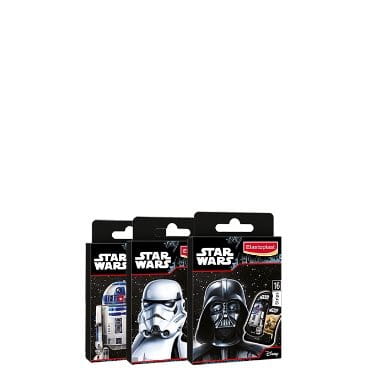Disney Frozen 2
Product Info
Elastoplast Disney Frozen 2

*Elastoplast plasters block 99% of dirt and bacteria.
Trusted Wound Protection
Remember, alongside these adventurous plasters is our trusted wound care expertise. The colours are safe and the plasters are painless to remove. The flexible material is water-resistant and protects wounds from dirt and bacteria.


How To Use
Ingredients
Product Content
|
Product |
Type |
Size |
Quantity |
||||
|---|---|---|---|---|---|---|---|
|
Product : |
Disney Frozen 2 Plasters
|
Type : |
|
Size : |
19 x 55 mm |
Quantity : |
14 Strips |
|
Product : |
20 Strips (assorted) (assorted)
|
Type : |
|
Size : |
30 x 55 mm |
Quantity : |
6 Strips |
FAQ (7)
-
1. How often should I change the children's plasters?
Usually, it is recommended to change the children's plaster as any other standard first aid dressing daily due to hygienic reasons.
-
2. Is it better to let small wounds dry at the fresh air instead of putting on a plaster?
It is one of the wound care myths that keeping minor cuts and grazes uncovered and let air to them helps them to heal faster. The contrary is true! Research shows that covered wounds heal more efficiently and have a reduced risk of infection. Hansaplast products provide protection until the wound is completely healed. -
3. When should I consult a doctor?
We recommend contacting a medical professional under the following circumstances:
- if the wound is deep and causing major bleeding
- if the wound shows signs of infection such as redness, warmth, pain and swelling
- if there are embedded foreign objects in it
- in case of animal or human bites
- if the wound is in the area of the face
- if there is insufficient tetanus vaccination
- and of course always when you have questions or are uncertain.
-
4. What if my children's wounds get infected and suppurate?
You should contact a medical professional if you recognize signs of infection. This is not only the occurrence of pus but also swelling, redness, heat, pain, itching or burning. In case of infection the wound will need medical care and special medical treatment. -
5. What plaster should I use for sensitive skin?
These coloured plasters are very skin-friendly and easy to remove. The colours used are resistant to saliva and sweat and are proven to be safe for children. If you have very sensitive skin we recommend using the Elastoplast Sensitve or Elastoplast Sensitive Kids products. These plasters are especially developed for sensitive skin and are very skin-friendly and hypoallergenic.
-
6. Which Elastoplast plasters are waterproof and water-resistant?
The Elastoplast Aqua Protect and Aqua Protect XL/XXL strips as well as the Fast Healing Plasters are waterproof and will not go off while washing or showering. The Elastoplast Fabric range is water-repellent. The material keeps water on the surface where it beads off. All Elastoplast Water Resistant plasters as well as the Junior plasters are water-resistant.
-
7. Which plasters do you recommend for wounds on fingers?
For injuries and wounds on hands and fingers we recommend our special Elastoplast Finger Strips. These plasters are extra long so that they stick perfectly on fingers. Moreover we offer a special handset with three different plaster shapes to fit fingertips and knuckles.














